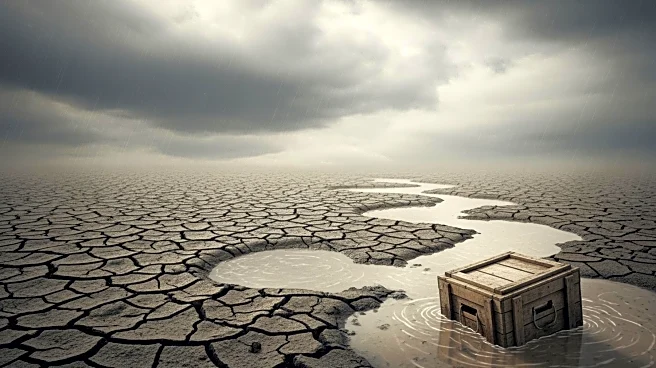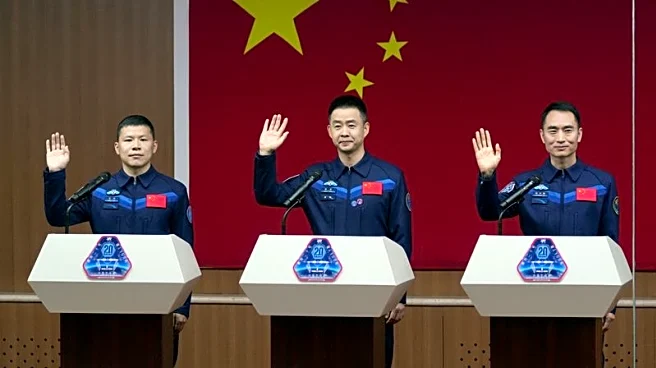What's Happening?
Heavy rains have exacerbated the humanitarian crisis in Gaza, where makeshift shelters have been flooded, worsening conditions for displaced Palestinians. The Israeli defense body, COGAT, claims that hundreds
of trucks carrying essential supplies enter Gaza daily. However, the United Nations reports that Israel has rejected over 100 requests for relief materials, including blankets and sanitation tools. The collapse of water and sewage systems, attributed to Israeli strikes, has left over 1.5 million displaced Palestinians in urgent need of emergency shelter assistance. The situation is dire, with the mixing of rainwater and sewage creating environmental and health hazards.
Why It's Important?
The humanitarian crisis in Gaza highlights the severe impact of infrastructure destruction and restricted aid on civilian populations. The rejection of essential relief materials by Israel has drawn international attention and criticism, potentially affecting diplomatic relations and humanitarian policies. The crisis underscores the urgent need for effective international intervention and support to address the basic needs of displaced populations. The ongoing tensions and humanitarian challenges could influence U.S. foreign policy and international humanitarian efforts, as well as impact regional stability.
What's Next?
The U.N. Security Council is set to vote on a U.S. proposal for an international stabilization force in Gaza, facing opposition from Russia, China, and some Arab countries. The outcome of this vote could determine the level of international involvement in addressing the crisis. Additionally, internal political tensions in Israel regarding the peace process and Palestinian statehood may influence future policy decisions. The humanitarian situation in Gaza remains critical, with immediate and long-term solutions needed to prevent further deterioration.
Beyond the Headlines
The crisis in Gaza raises ethical and legal questions about the responsibilities of occupying powers and the rights of displaced populations. The destruction of infrastructure and restricted aid access highlight the complex interplay between military actions and humanitarian needs. Long-term shifts in international humanitarian law and policy may be prompted by the ongoing situation, influencing future responses to similar crises worldwide.














